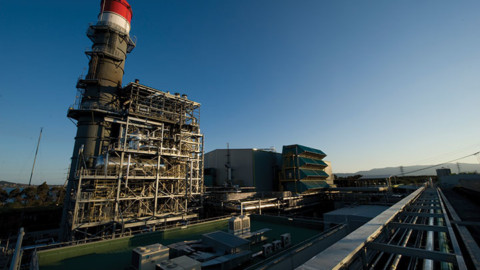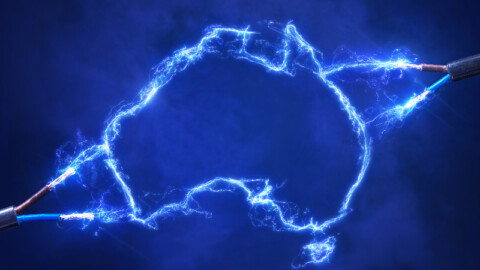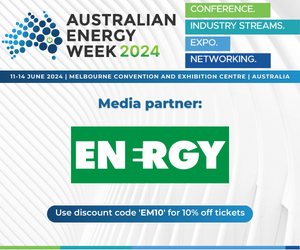Bernard Norton, Country Managing Director, Hitachi Energy, Australia
As electricity emerges as the backbone for Australia’s sustainable energy future, boosting network interconnectivity and capacity will critically rely on the technologies that best deliver a flexible and efficient transmission system.
The brilliant minds of Franklin, Volta, Tesla, Edison and Dobrovolsky laid the foundations for the industrial age through uncovering the secrets of producing and using electrical energy. Electricity has helped improve the standard of living ever since and is a significant element in the energy mix of modern society.
As the world moves towards a sustainable energy future, electricity is becoming an ever more important source of energy – it will be the backbone of our sustainable energy future. Multiple studies indicate that electricity consumption will keep increasing and account for over 40 per cent of total energy demand by 2050.
Australia’s electric future relies on network interconnectivity
In Australia, wind, solar and hydro will be the basis of electrifying the transportation, mining, building and industrial sectors. Where direct electrification is either not efficient or impossible, complementary and sustainable energy carriers, such as green hydrogen, will be introduced.
Australia already has amongst the world’s highest penetration of wind and solar in its generation mix. The latest Clean Energy Report from the Clean Energy Council highlights that over 30 per cent of total generation in Australia in 2021 came from renewable sources – mostly wind, small and large scale solar, and hydro.

Demand growth, two-way energy flow, and the need to connect widely distributed energy sources are driving the need to significantly upgrade and expand grid capacity and interconnectivity. IEA’s World Energy Outlook for 2020 underscores these needs, stating “the pace of change in the electricity sector puts an additional premium on robust grids and other sources of flexibility”.
Addressing the need for flexibility, Hitachi Energy’s Chief Technology Officer, Gerhard Salge, said, “In order to manage a significantly higher amount of fluctuating power generation and new consumption patterns, our energy system needs to become more flexible and further evolving technology development is required to deliver this.
“Innovative grid components using power electronics will provide the operational flexibility needed to enable grids to become more efficient.
“Sensors will provide the necessary information and digital solutions will communicate and process the huge amount of information in more intelligent grid control centres.
“This will enable faster decision making in a much more dynamic environment than we have ever seen before.”
Improving network interconnectivity and capacity, through the optimisation and augmentation of existing infrastructure and building new capacity, is required to realise the sustainable energy future.
Governments are supporting this development through the creation of Renewable Energy Zones, which will assist in optimising investment and development in renewable generation capacity and network infrastructure.
Connection of proposed offshore wind projects will also require network upgrades. Announcements of projects off the coast of New South Wales, Victoria, Tasmania, South Australia and Western Australia give some concept of the scale of investment required.
And of course, the Battery of the Nation project, which will provide much needed firming capacity to the network, is dependent on the Marinus Link.
Hitachi Energy: a leader in transmission technology
It’s very apparent that this new energy paradigm requires a significant build out and upgrade to grid infrastructure, and Hitachi Energy is well positioned to support this capacity expansion.
Offshore wind farms present a challenge when it comes to connection to the grid, a similar challenge will be connecting the Battery of the Nation to the National Electricity Market (NEM).
As a pioneer of high-voltage, direct current (HVDC) technology, Hitachi Energy can offer proven solutions for these types of major transmission projects. With the company’s first commercial link going into service in 1954, Hitachi Energy understands that HVDC is the most efficient way to transport bulk electricity over long distances, and it’s the only method suitable for long undersea transmission.
In Australia, Hitachi Energy is the technology provider for two of the three existing HVDC links. These links have been in-service for over 20 years, providing critical links in the NEM between Victoria and South Australia and New South Wales and Queensland respectively.
The VIC/SA interconnector remains the longest underground HVDC cable system in the world.
Transmitting bulk energy using AC technology can also involve the application of sophisticated power electronics to ensure efficient transmission. Series and shunt compensation are the backbone of Flexible AC Transmissions Systems (FACTS).
Static Var Compensators (SVCs) ‒ and their smaller siblings, STACOMs ‒ are employed within the Australian NEM to support the AC transmission system. SVCs can provide network services including support in response to events such as short circuits, load, or generator disconnections as well as increasing transfer capacity and reducing losses.
In this way a flexible and robust transmission system is maintained. This is an area in which Hitachi Energy plays a leading role in the energy transition, with our technology employed extensively throughout the NEM.
As society moves towards a sustainable energy future, electricity will be the backbone and a robust, reliable and flexible transmission and distribution system will be essential.
A combination of power electronics and digital technologies will be needed to optimise the efficiencies of the existing grid, as well as build out the new grid to connect energy sources geographically dispersed across Australia’s vast landscape. It’s an exciting time for the industry.
In the spirit of Franklin, Volta, Tesla, Edison and Dobrovolsky, Hitachi Energy will continue to apply the pioneering focus and innovation that is part of the company’s DNA and the team is looking forward to co-creating a sustainable energy future for all.
This sponsored editorial is brought to you by Hitachi Energy. For more information, visit hitachienergy.com.

















